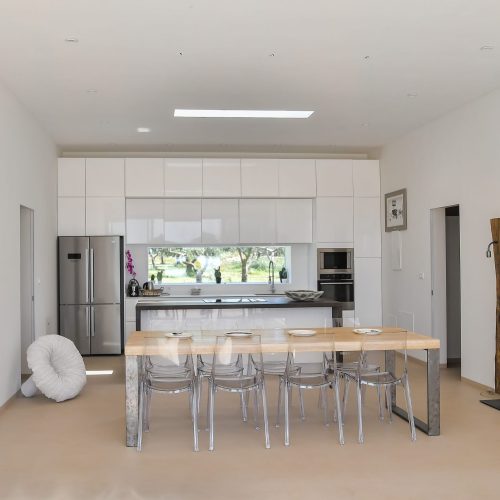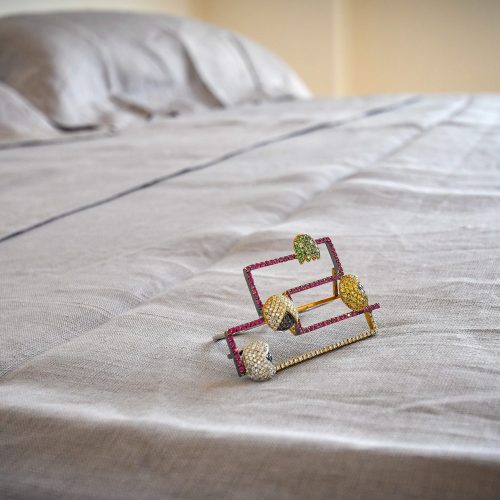Privacy Policy
T&G s.r.l. (hereinafter T&G) informs you that the information and data voluntarily provided by users will be processed in compliance with the provisions of Legislative Decree no. 196 of 30 June 2003 - Code on the protection of personal data (the full text of which can be found on the website www.garanteprivacy.it).
Processing of personal data means any operation or set of operations concerning the collection, recording, organisation, storage, consultation, processing, modification, selection, extraction, comparison, use, blocking, communication, dissemination, erasure and destruction of data, even if not registered in a database.
- Purpose of processing
The data collected and held will be processed in order to fulfil fiscal/tax obligations provided for by law, regulations and Community legislation and, in any case, for the sole purpose of enabling the exact fulfilment of the obligations arising from the purchase contract and/or for the acquisition of the necessary contractual information exclusively activated at the request of the interested party.
- Treatment modalities
The personal data provided by users will mainly be processed with electronic or automated tools.
Users' common personal data may be communicated to:
- persons, companies or professional firms that provide assistance and advice to T&G in accounting, administrative, legal, tax and financial matters relating to the provision of services;
- subjects, entities and authorities to which the communication of personal data is mandatory by law;
- subjects delegated and/or appointed by T&G to carry out activities strictly related to the management of the Website;
- subjects delegated and/or appointed by T&G to carry out maintenance activities of the network equipment and electronic communication networks.
In any case, neither T&G nor any of the aforementioned subjects shall process "sensitive data" (art. 4, paragraph 1 of Legislative Decree 196/2003).
- Data controller
The data controller of the data collected through this website is T&G s.r.l., with registered office in Via Romeo De Magistris, 39 - 73100 Lecce - Italy.
- Rights of the interested parties
The subjects to whom the personal data refer are entitled to exercise all the rights recognized by art. 7 of Legislative Decree 196/2003, which is reproduced in full:
the interested party has the right to obtain confirmation of the existence or not of personal data concerning him/her, even if not yet recorded, and their communication in intelligible form.
The interested party has the right to obtain indication of:
the origin of the personal data;
the purposes and methods of processing;
the logic applied in the event of processing carried out with the aid of electronic instruments;
the identity of the data controller, data processors and the representative designated pursuant to Article 5(2)
of the entities or categories of entity to whom or which the personal data may be communicated and who or which may get to know said data in their capacity as designated representative(s) in the State's territory, data processor(s) or person(s) in charge of the processing.
The interested party has the right to obtain
updating, rectification or, when interested, integration of the data;
the cancellation, transformation into anonymous form or blocking of data processed in breach of the law, including data whose retention is unnecessary for the purposes for which the data were collected or subsequently processed;
certification to the effect that the operations as per letters a) and b) have been notified, as also related to their contents, to the entities to whom or which the data were communicated or disseminated, unless this requirement proves impossible or involves a manifestly disproportionate effort compared with the right that is to be protected.
The interested party has the right to oppose, in whole or in part
on legitimate grounds, to the processing of personal data concerning him/her, even though they are relevant to the purpose of the collection;
to the processing of personal data concerning him/her, where it is carried out for the purpose of sending advertising materials or direct selling or else for the performance of market or commercial communication surveys.
- Changes and updates of the Privacy Policy
T&G may amend and update the Privacy Policy of the Website, in whole or in part, at any time, also in consideration of the amendment of the laws or regulations that govern this matter and protect the rights of the Users. The amendments and updates of the Privacy Policy shall be binding as soon as they are published on the Website, so we ask users to regularly review the Privacy Policy.
- Contact
The user may freely exercise its rights at any time, with a written request addressed to T&G at the email address info@fineaptitude.it
















